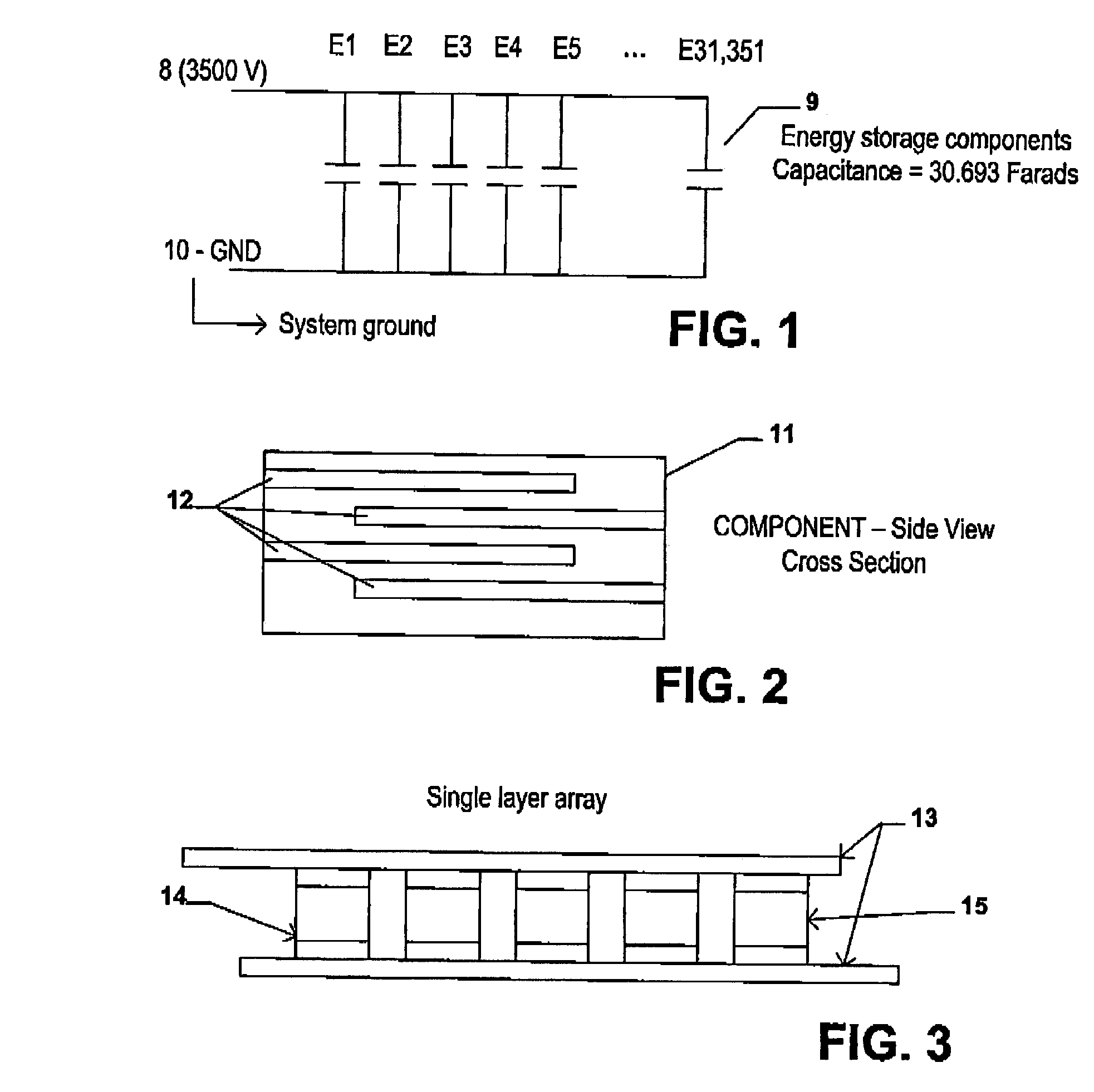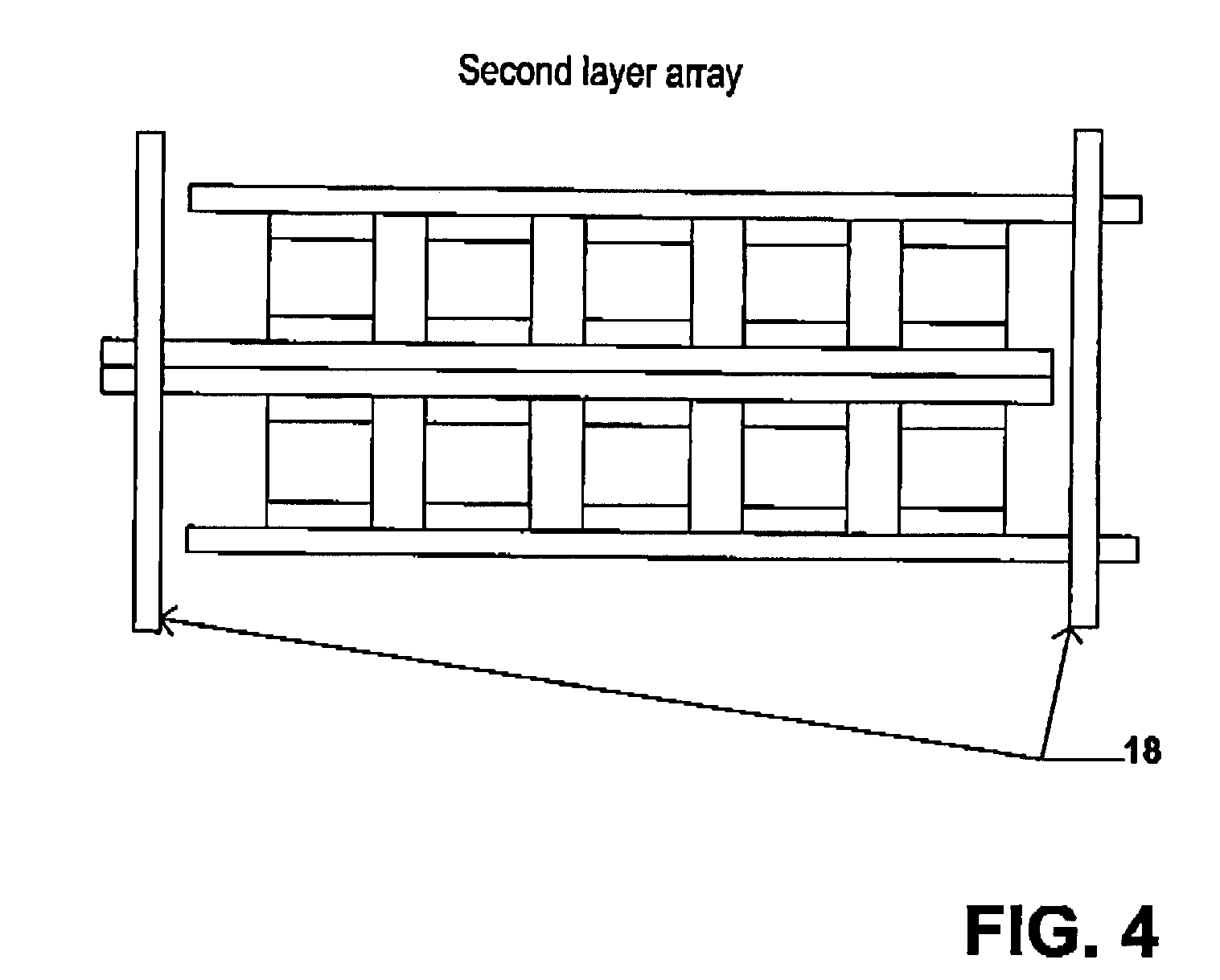Utilization of poly(ethylene terephthalate) plastic and composition-modified barium titanate powders in a matrix that allows polarization and the use of integrated-circuit technologies for the production of lightweight ultrahigh electrical energy storage units (EESU)
a technology of barium titanate and polyethylene terephthalate, which is applied in the direction of fixed capacitor details, cell components, fixed capacitors, etc., can solve the problems of cost translation, nimh batteries yield nearly twice the performance, etc., and achieves low processing cost, low sintering temperature, and cost saving in material expense and power usage.
- Summary
- Abstract
- Description
- Claims
- Application Information
AI Technical Summary
Benefits of technology
Problems solved by technology
Method used
Image
Examples
example
The electrical-energy-storage unit's weight, stored energy, volume, and configuration design parameters
[0060]The relative permittivity of the high-permittivity powder to be achieved is 21,072.[0061]The 100 Å coating of Al2O3 and 100 Å of poly(ethylene terephthalate plastic will reduce the relative permittivity by 12%.[0062]The resulting K=18,543
[0063]Energy stored by a capacitor: E=CV2 / (2×3600 s / h)=W·h[0064]C=capacitance in farads (F)[0065]V=voltage across the terminals of the capacitor[0066]It is estimated that is takes 14 hp, 746 W per hp, to power an electric vehicle running at 60 mph with the lights, radio, and air conditioning on. The energy-storage unit must supply 52,220 W·h or 10,444 W for 5 hours to sustain this speed and energy usage and during this period the EV will have traveled 300 miles.[0067]Design parameter for energy storage—W=52.22 kW·h[0068]Design parameter for working voltage—V=3500 V[0069]Resulting design parameter of capacitance—C=30.693 F
[0070]C=∈0KA / t[0071]∈...
PUM
 Login to View More
Login to View More Abstract
Description
Claims
Application Information
 Login to View More
Login to View More - R&D
- Intellectual Property
- Life Sciences
- Materials
- Tech Scout
- Unparalleled Data Quality
- Higher Quality Content
- 60% Fewer Hallucinations
Browse by: Latest US Patents, China's latest patents, Technical Efficacy Thesaurus, Application Domain, Technology Topic, Popular Technical Reports.
© 2025 PatSnap. All rights reserved.Legal|Privacy policy|Modern Slavery Act Transparency Statement|Sitemap|About US| Contact US: help@patsnap.com



